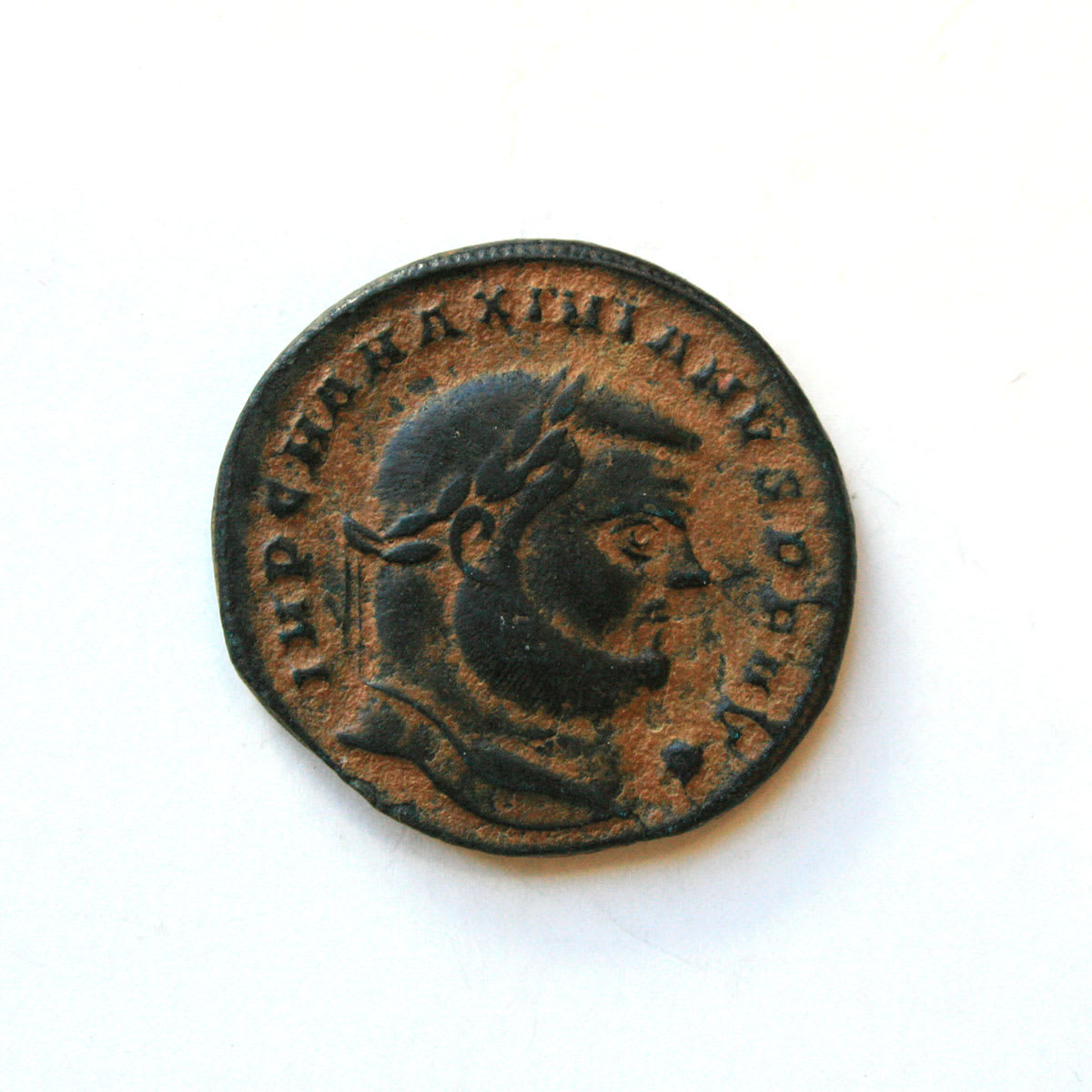Bronze Follis of Emperor Maximianus, 286 CE - 305 CE
Bronze
height 2.5 cm
height 1 in
height 1 in
C.6982
Obverse, IMP C MA MAXIMIANVS P F AVG, encircling bearded, laureate head of Maximianus; reverse, GENIO POPV L I ROMANI encircling Genius standing left, modius on head, naked but for...
Obverse, IMP C MA MAXIMIANVS P F AVG, encircling bearded, laureate head of Maximianus; reverse, GENIO POPV L I ROMANI encircling Genius standing left, modius on head, naked but for chlamys over left shoulder, right hand holding patera from which liquid flows, left hand holding filleted cornucopia; ANT, in exergue; S, in right field. The follis is a bronze coin first introduced during the coinage reforms of Diocletian around AD 294 and weighs about 10 grams. Originally it would have been covered by a thin layer of silver.
Maximianus rose through the ranks of the army to become Caesar, under Diocletian in AD 285 and Augustus the following year. Renowned for his military brawn, his early career was spent mostly on campaign. He abdicated first in AD 305 and, having resumed the title of Augustus in AD 306, again in AD 308. Thereafter, he lived at the court of reigning emperor Constantine, husband of his daughter Fausta until his death by ordered suicide after a foiled attempt to kill the emperor in AD 310. The obverse of Maximianus’ issues customarily feature the head of the emperor, perpetrating a long-established iconographical formula. According to Bandelot De Dairval, the representation of Genius, the anthropoid form of a protective spirit, on the reverse bears reference either to Maximianus himself whom flattery caused to be thus represented or serves a prophylactic function.
Maximianus rose through the ranks of the army to become Caesar, under Diocletian in AD 285 and Augustus the following year. Renowned for his military brawn, his early career was spent mostly on campaign. He abdicated first in AD 305 and, having resumed the title of Augustus in AD 306, again in AD 308. Thereafter, he lived at the court of reigning emperor Constantine, husband of his daughter Fausta until his death by ordered suicide after a foiled attempt to kill the emperor in AD 310. The obverse of Maximianus’ issues customarily feature the head of the emperor, perpetrating a long-established iconographical formula. According to Bandelot De Dairval, the representation of Genius, the anthropoid form of a protective spirit, on the reverse bears reference either to Maximianus himself whom flattery caused to be thus represented or serves a prophylactic function.
